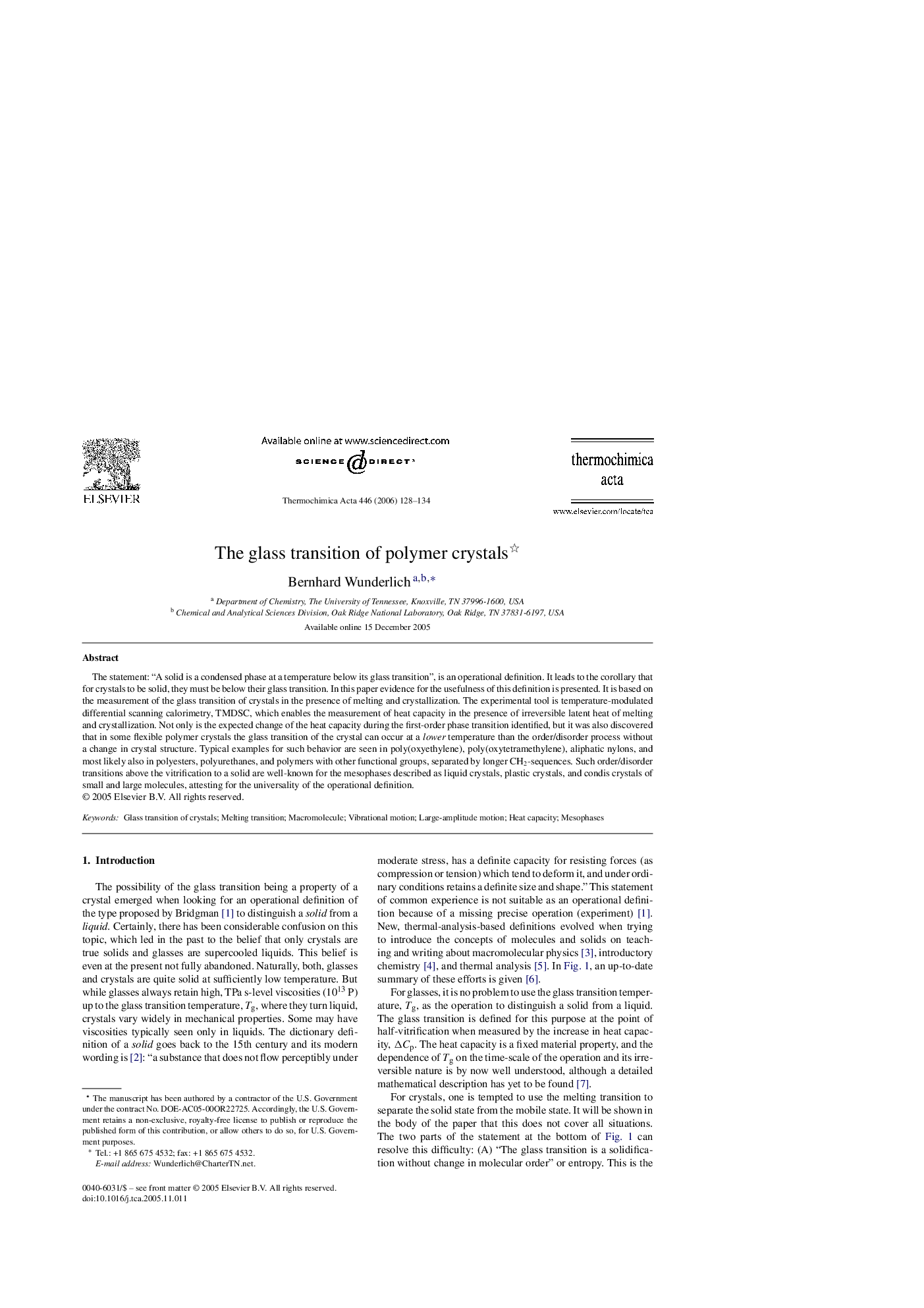| Article ID | Journal | Published Year | Pages | File Type |
|---|---|---|---|---|
| 675794 | Thermochimica Acta | 2006 | 7 Pages |
The statement: “A solid is a condensed phase at a temperature below its glass transition”, is an operational definition. It leads to the corollary that for crystals to be solid, they must be below their glass transition. In this paper evidence for the usefulness of this definition is presented. It is based on the measurement of the glass transition of crystals in the presence of melting and crystallization. The experimental tool is temperature-modulated differential scanning calorimetry, TMDSC, which enables the measurement of heat capacity in the presence of irreversible latent heat of melting and crystallization. Not only is the expected change of the heat capacity during the first-order phase transition identified, but it was also discovered that in some flexible polymer crystals the glass transition of the crystal can occur at a lower temperature than the order/disorder process without a change in crystal structure. Typical examples for such behavior are seen in poly(oxyethylene), poly(oxytetramethylene), aliphatic nylons, and most likely also in polyesters, polyurethanes, and polymers with other functional groups, separated by longer CH2-sequences. Such order/disorder transitions above the vitrification to a solid are well-known for the mesophases described as liquid crystals, plastic crystals, and condis crystals of small and large molecules, attesting for the universality of the operational definition.
